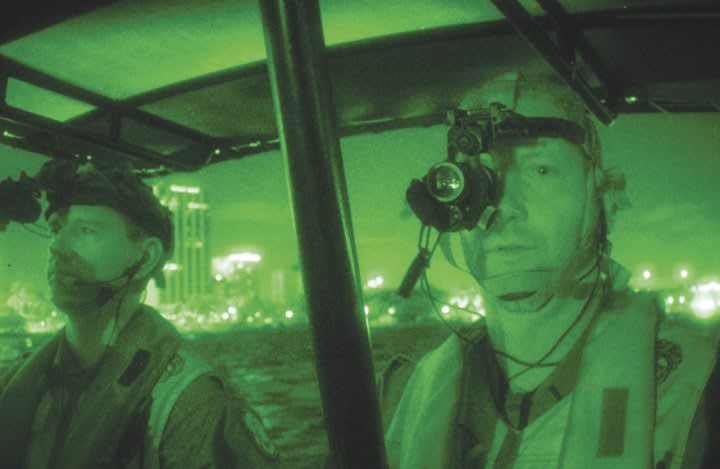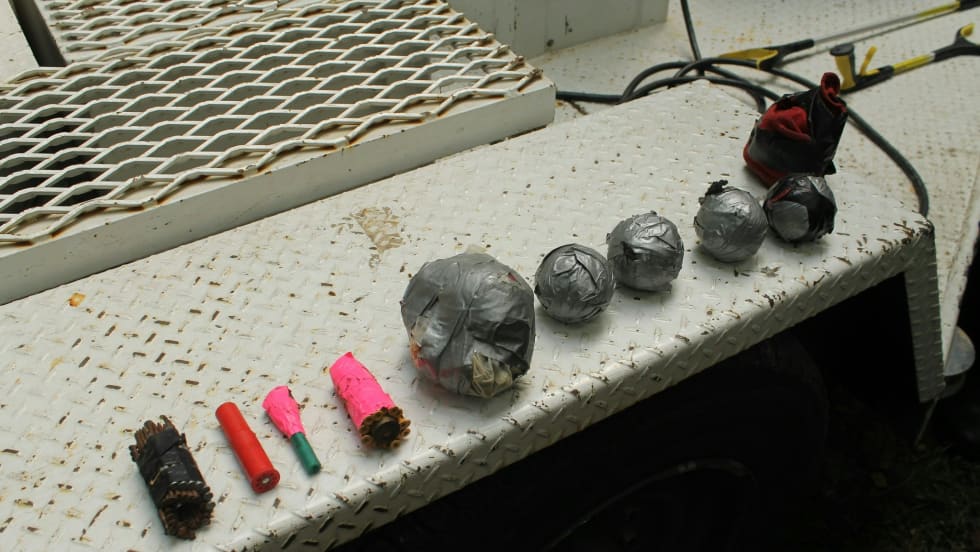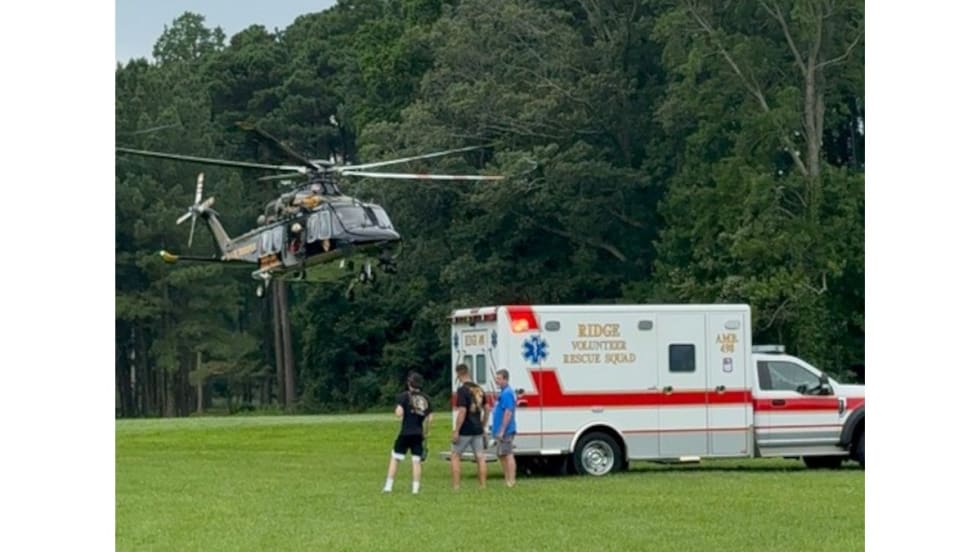Most officer-involved shootings occur in low light conditions.
Consequently, law enforcement officers need every advantage to help them recognize threats and offenders in low-light and even no-light conditions.
Most officer-involved shootings occur in low light conditions. Consequently, law enforcement officers need every advantage to help them recognize threats and offenders in low-light and even no-light conditions.

Most officer-involved shootings occur in low light conditions.
Consequently, law enforcement officers need every advantage to help them recognize threats and offenders in low-light and even no-light conditions.
Unfortunately, the human eye degrades with age. So every 10 years that you age, you need twice as much light to see in low light as you used to require. To put this in perspective, a 40-year-old officer needs approximately four times more light than a suspect/threat who is in his late teens. Going from darkness to light, the average eye requires approximately three minutes to fully adapt while going from bright light into darkness requires approximately 30 minutes.
The use of night vision devices (NVD) can provide operators the ability to see in low light at the "flip of a switch." But they are costly. So you need to know how to match the equipment to your mission.
Mission Requirements
Determining how a system will be used operationally is essential in making an appropriate selection. Mission definition is defined by the operating environment, the system requirements, and the personnel who will be using it. For example, consider three common law enforcement users of NVDs—a SWAT sniper/observer team, a detective, and a patrol officer—and how they can use this equipment to accomplish their missions.
A SWAT sniper/observer team is required to make precision engagements and to provide surveillance for the rest of the team. Threat detection, identification, and engagement are all essential. A Sniper/Observer team using a scoped precision rifle and spotting scope should be able to detect and identify threats in all environments, including low light and no light. Because of SWAT's mission requirements, SWAT personnel often have training with NVDs and access to equipment.
In contrast, a detective conducting a surveillance mission needs to covertly observe locations and/or individuals often at long range and have facial identification grade resolution. Systems with higher magnification for longer ranges and those that can record imagery are preferred for this application. Detectives may not have the benefit of additional NVD training or access to advanced equipment.
A patrol officer could be called on to operate in a broad range of environments from urban traffic stops to rural searches. Night urban environments can have high levels of ambient light from cultural sources, so NVDs may not be necessary. In contrast, a search in a darkened warehouse in the middle of the day can present patrol officers with a low-light environment in which NVDs may be extremely beneficial. Finally, patrol officers working in rural environments may require longer range operations in night conditions where there is little or no cultural light. Unfortunately, regardless of where they work, patrol officers are unlikely to have extensive NVD training or access to the equipment.
Determining the operational missions that need to be supported is the first step in buying NVDs. Failure to consider the essential missions to be supported will often result in less than optimum choices that will not provide the full benefits of night vision technologies.
The example missions detailed above are only a taste of what night vision devices can do for law enforcement officers. A complete understanding requires assessment of the LE operators, the operating environments, the tasking, available technical and tactical training, and the allocated budget. There is no one-size-fits-all NVD solution.
Night Vision Technologies
The second consideration that you have to address when you buy NVDs is what technology will do the job.
There are four basic NVD technology categories available: image intensifiers (I2); infrared receivers (IR); charge coupled devices (CCD); and traditional optical. An extensive discussion of how these technologies work is beyond the scope of this short article. However, I can give you a brief introduction to each.
Image Intensifiers (I2)
I2 systems take in small amounts of ambient light in the visual spectrum and into the near infrared range and amplify that energy thousands of times. The current I2 process works like this: light (photons) enters and hits the photocathode in the I2 tube; the photons excite and then release electrons from the high voltage photocathode; the electrons hit the micro channel plate and release additional electrons; and the electrons hit the phosphorous screen and create an image for the operator to view. All I2 systems use an optical amplification process that requires some available level of light.
When comparing I2 systems, keep in mind two important performance measurements: light amplification and resolution. Current I2 systems amplify ambient light approximately 40,000 times. System resolutions are compared on how well they can distinguish between objects of a known size located a known distance apart and are measured in line pairs per millimeter written (lp/mm); more is better.
Infrared Receivers
Infrared receiver (IR) systems use a passive electro-optical technology that detects the differences in temperatures radiated or reflected by an object when compared to background temperatures. Sometimes referred to as "thermal imaging," IR systems detect thermal contrast and display that contrast as an image of different colors or shades of color.
Visible light is not required for IR sensors; therefore they are not as affected by weather, smoke, or many other elements that can obscure natural vision and I2 systems. IR systems are effective for long-range detection but do not provide facial recognition type images.
The IR system works like this: IR Energy enters and activates the sensor array; the sensor array translates the detected IR energy levels into a pattern of electrical signals; the signal processor translates the electrical signals into a video image; and the video image is presented on the system's video display. (See IR system diagram on page 38.)
IR system performance is impacted by the resolution of the sensor array, temperature differentiation, and resolution of the display system. IR Sensors often have a video output to display on an external view screen (laptop or console monitor) or to be recorded.
Charge Coupled Devices
A charge coupled device (CCD) is a newer technology in which passive systems can detect low light levels using a digital sensor array (or similar chip system). They operate like the IR systems described previously, but they use the visual and near-IR spectrum like I2 systems.
CCD chips are rated for specific low light levels at which they will operate without additional illumination. The lower the rated light level, the better for LE use.
CCD systems work like this: The sensor array translates the detected light energy into electrical signals; the signal processor then converts the electrical signals into an image; and the display presents the image to the operator.
The technology of CCDs has only recently been integrated into configurations applicable to LE. As CCD technology continues to evolve, performance should improve and choices should expand.
Optical Systems
Certain optical devices such as binoculars and scopes can perform better in lower light environments than similar optical devices. To determine the low-light performance of your optics, divide the optic size by the magnification power. This gives you a comparative rating of light-gathering performance. The average human eye performs in the range of 7 to 8 in this performance scale. Choices as simple as a scope's magnification settings can impact performance in lower light levels. Careful selection of optics can enhance their use in low light operations.
Illuminators and Lasers
Artificial illumination in the near IR spectrum is valuable for CCD and I2 systems. A white light flashlight illuminates the visual spectrum. An IR light or a white light with an IR filter can be used to covertly illuminate for NVDs. Near IR illumination provides additional light to be amplified, which gives you longer detection ranges and improves image quality.
Additionally, an IR laser can be employed with CCD and I2 systems for aiming and target designation. IR lasers cannot be seen by the unaided eye. LE operators can covertly use IR illumination and lasers to designate a target and resolve engagements. Just remember that a threat equipped with I2 or CCD technology can also see IR illumination.
Different Tools
No-light and low-light NVDs come in many forms, including handheld monocular or binocular devices, helmet-mounted systems, and weapons sights.
The most used NVD system in law enforcement is the handheld monocular or binocular. These systems are easy to use and easy to transport. For operations where the officers need their hands to carry weapons or other equipment, a handheld monocular or binocular NVD can be attached to a helmet or headband. You can also buy goggle systems that are designed specifically for helmet or headband wear. A goggle system can be detached for use as a handheld.
A specialized I2 and IR configuration is the weapon sighting system with dedicated NVD weapon sights that replace traditional sights. Some systems are added before or behind an existing optical or red dot sight, making them effective for daylight (without the NVD) and low-light weapon systems (with the NVD). These NVD weapon sights can provide low-light engagement capability without white light illumination. The selection of configuration must be considered when assessing the LE mission being supported. Some can be configured as handheld, goggle, or add-on weapon sights in a single design for maximum flexibility.
The selection of NVD for LE applications requires fully understanding both the mission objectives and the capabilities and limitations of the prospective technologies. Understanding a unit's LE missions requires the operators to assess their requirements, consider other LE and military units' experiences, then assess available NVD technology.
Also remember that just because you studied NVD technology three years ago does not mean that you know its current capabilities. NVD technology is constantly evolving and a minimum understanding of capabilities and limitations is needed before selecting a technological solution. Full use of available military and LE research, training, and hands-on experience should be considered before selecting a system.
David Narkevicius is a leading authority on night vision operations for law enforcement. He is a host for TREXPO and teaches night vision during the conference. A founding member of the Personal Security Institute, Narkevicius is a senior staff advisor in the Office of the Secretary of Defense.

Over the next two years, the Ohio DFR Pilot Program will equip municipalities with advanced drone systems, deliver comprehensive training for first responders, and enable FAA-approved Beyond Visual Line of Sight operations.
Read More →
A motor officer, Sgt. Caleb Eisworth was on his way to participate in a funeral escort when he was struck by another vehicle.
Read More →
Inside the bedroom officers found what they believed to be an IED. The officers evacuated the house and called for the Chattanooga Police Bomb Squad and ATF agents.
Read More →
Sergeant Greg Graff was “preparing school leaders for the upcoming year during a safety training program at Clearwater High School,” the school district said.
Read More →
ATF Special Agent in Charge Kenny Cooper said definitively that only one grenade detonated at the facility on July 18.
Read More →
LASD said Detective Joshua Kelley-Eklund, Detective Victor Lemus, and Detective William Osborn who were all assigned to Special Enforcement Bureau’s Arson Explosives Detail were killed in the incident.
Read More →
The Maryland State Police Aviation Command Trooper 7 crew, the MSP helicopter based in California, Maryland, were monitoring the county dispatch radio, overheard the dispatch, and self-launched.
Read More →
At press time the names of the deputies had not been released. Sheriff Robert Luna said one had served for 19 years, another for 22 years, and another for 33 years.
Read More →
The vehicle’s air conditioning failed because of a malfunctioning compressor and its heat alarm did not function, according to the sheriff’s office.
Read More →
Deputy Saunders rushed Sam to the vet as soon as soon he noticed the dog was in distress after the training, the sheriff’s department said.
Read More →